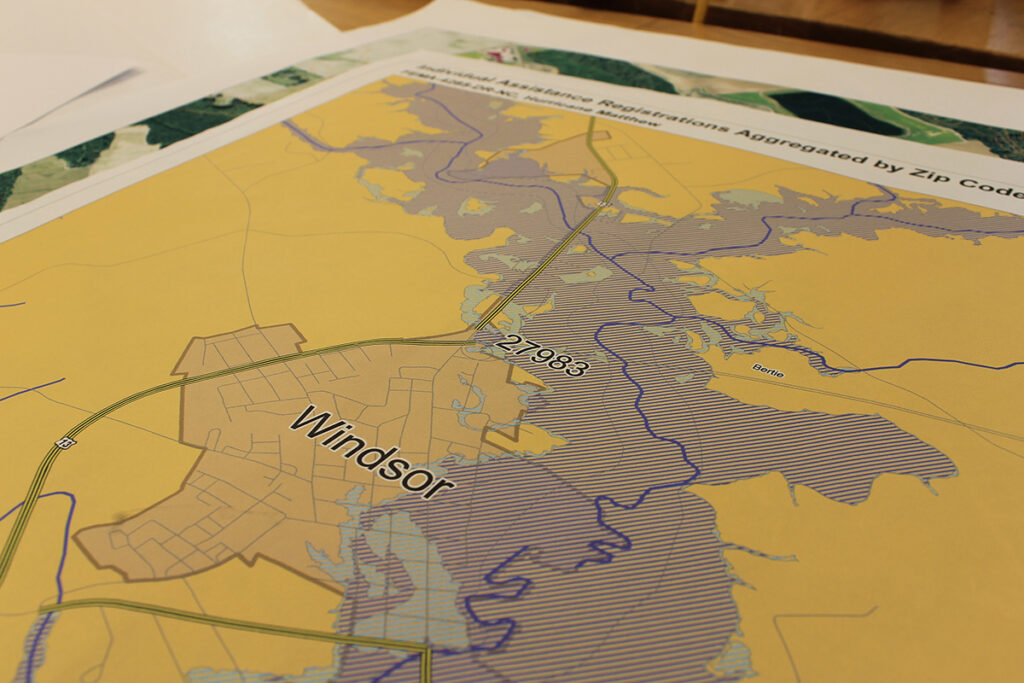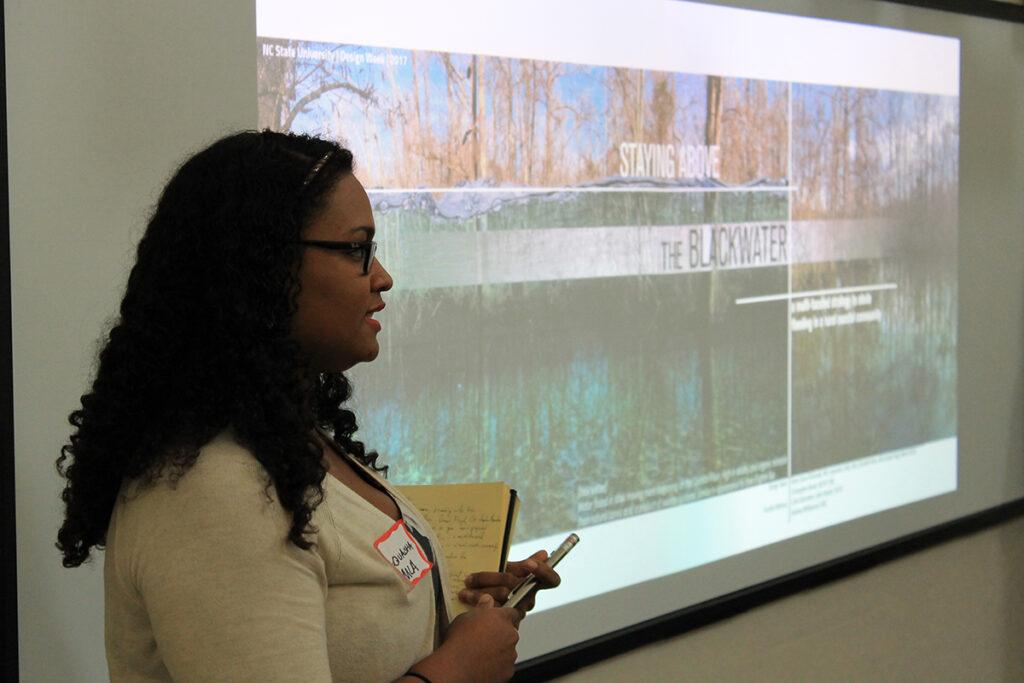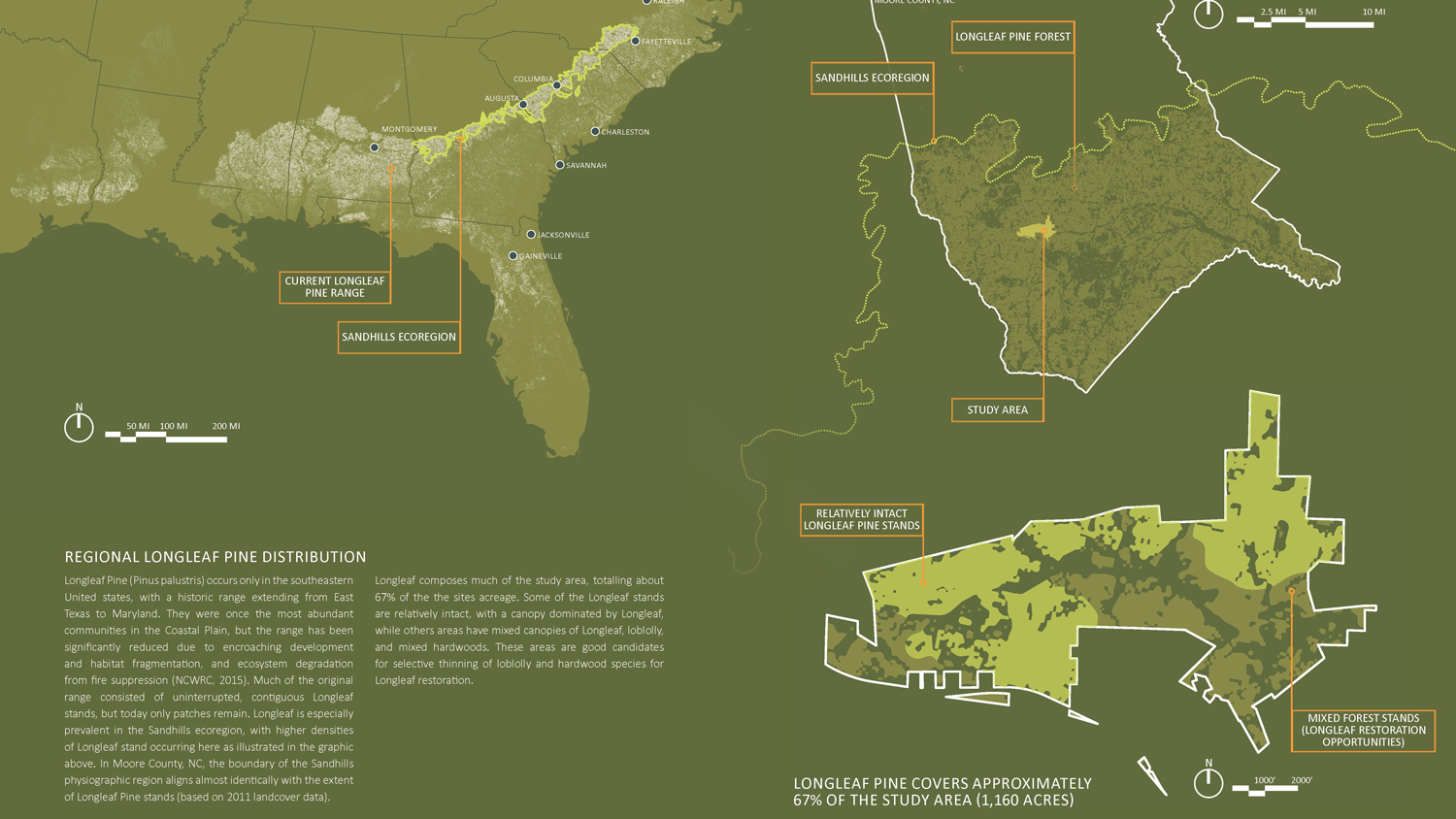DesignWeek: the Windsor, NC Experience
This is a blog written by Jaquasha Colón, NC State University College of Design, Master of Landscape Architecture Candidate 2017 | WILA Leadership Board 2016-17 | UNCC Master of Urban Design 2015 | FAMU, BS of Architectural Studies 2014, who shares her appreciation of the opportunity to serve the community of Windsor, NC, as a recap of her experience during DesignWeek 2017.
I came into DesignWeek elated. DesignWeek itself was set up similarly to the Urban Land Institute’s Hines Student Competition, a two-week-long, incredibly intensive and highly competitive international project held every January in the first week of the school year (I participated in the 2015 competition). Like the Hines, the teams consisted of a handful of students in different disciplines working together on a specific site with a set of issues presented, which students are asked to address. Where DesignWeek differs is in location and urgency: The project was close to home and dealt with disaster mitigation. Instead of working with a handful of blocks in a city no one on our team had ever seen, we were tasked with sites in our state, all of which were hit hard by Hurricane Matthew. My team was tasked with Windsor, in Bertie County.

This was my second time working in Bertie. The first time, in my Fall 2016 studio under Assistant Professor in Landscape Architecture Celen Pasalar, we were tasked with helping the community design a new nature park right on the coast of the Albemarle Sound. On our site visit to Windsor, we met the county manager and executive director. They drove us around the town, to our site, to the river center, and ended the day by buying the five of us lunch. By the time we left that first day, I was ready to hit the ground running on the project; I truly wanted to help this community. Soon our studio was preparing to set up a traveling community engagement stand at the local high school homecoming game, but tragedy after tragedy struck. Tropical Storm Julia swept over the area, flooding the town and shutting down the community. Within a few weeks it was underwater again due to Hurricane Matthew, and ultimately, we were not able to ever meet with the community. It changed the nature of our semester project, and in the end, the officials who took us around the town could not make it here to see the end result of our studio work due to the more important work of getting the community back on its feet.
Being chosen to study Windsor and Bertie again was an incredible opportunity to do something, anything, that could potentially help this community. Around 20 students went on the site visit to Windsor this time, and our reception was just as hospitable. We met with a handful of officials, toured the community, were treated to lunch at Bunn’s Barbeque, and were all given jars of Bertie County Peanuts, which were lovingly labeled with NCSU and UNC official labels. The community members were so sincere with us, so forthcoming, and so eager to work with us again, it touched my heart. Once again, I wanted nothing more than to help the community.
For the next few days, that is exactly what my team and I tried to do. Anna Grace Fitzgerald, Elizabeth Moss, Daniel Floyd, and Chris Bendix were incredibly driven teammates; each brought their very best to the table during DesignWeek, and each wanted to bring a great concept to the community that could actually help not just with the flooding issues, but also to grow the local economy and provide amenities to all community members equally. We quickly came to the conclusion that our biggest moves needed to address the flooding at the source of the problem, which in the case of Windsor lies at both ends of the Cashie River. We proposed natural interventions: We suggested leaky dams similar to beaver construction across the smaller streams, pocosins or small seasonal ponds that could hold excess flood water and slowly release it over time, and the construction of a raised delta in the bay at the mouth of the Cashie to block the wind from holding the flow of the river at a standstill during hurricanes. We were tasked with dreaming big, and we did just that: Our interventions stretched well over 30 miles of the Cashie itself and further upstream along several tributaries. The scale of our concepts stood out, and to my surprise, we were selected to present at the conclusion of DesignWeek. Even more surprisingly, all of our hosts from Windsor came to the final presentation to see the body of work produced. It was an honor to present our ideas to them as well as to hear their feedback.
I could be idealistic, but for those with the ability to shape the built environment, architects, planners, urban designers, landscape architects, and engineers, our greatest duty is the well-being of people and the environment. Our work is about more than the bottom line, than aesthetics, and much more than our own egos or those of our clients. Our work should be to help people from all walks, all backgrounds, no matter the means they have. DesignWeek drove that home for me. To be a student and be given the task of using design and planning to help a community reminds me of that almost sacred responsibility. I am truly thankful for the experience our devoted faculty put together and even more so that the leadership of Windsor gave us the chance to use our skills and talents for good.
 The NC State College of Design department of Landscape Architecture, along with various college campus, and statewide partners, seeks to facilitate a design conversation about how North Carolina can adapt to climate change.
The NC State College of Design department of Landscape Architecture, along with various college campus, and statewide partners, seeks to facilitate a design conversation about how North Carolina can adapt to climate change.
The intent of the inaugural edition of DesignWeek is to serve as a catalyst for discourse, debate, and action. Toward these ends, DesignWeek will demonstrate the role of design in building our state’s resilience to natural hazards, identify innovative strategies and techniques to address known and anticipated future socio-environmental issues, and direct resources to communities that increase health, safety, and welfare for all. The effort will focus on the future of our great state, including discussions related to the development of new strategies for living with the realities of flooding. Work emanating from DesignWeek will confront design issues and opportunities across time and physical scales. Short-term questions will explore ways of better preparing for and responding to the crises of recurring flooding in our communities. Long-term questions will explore methods of communicating the benefits of proactive climate adaptation strategies and the resultant community impacts.
Key Eastern NC locations are: Windsor in Bertie County, Kinston in Lenoir County, and Greenville in Pitt County all incurred substantial damage from Hurricane Matthew
- Categories:



